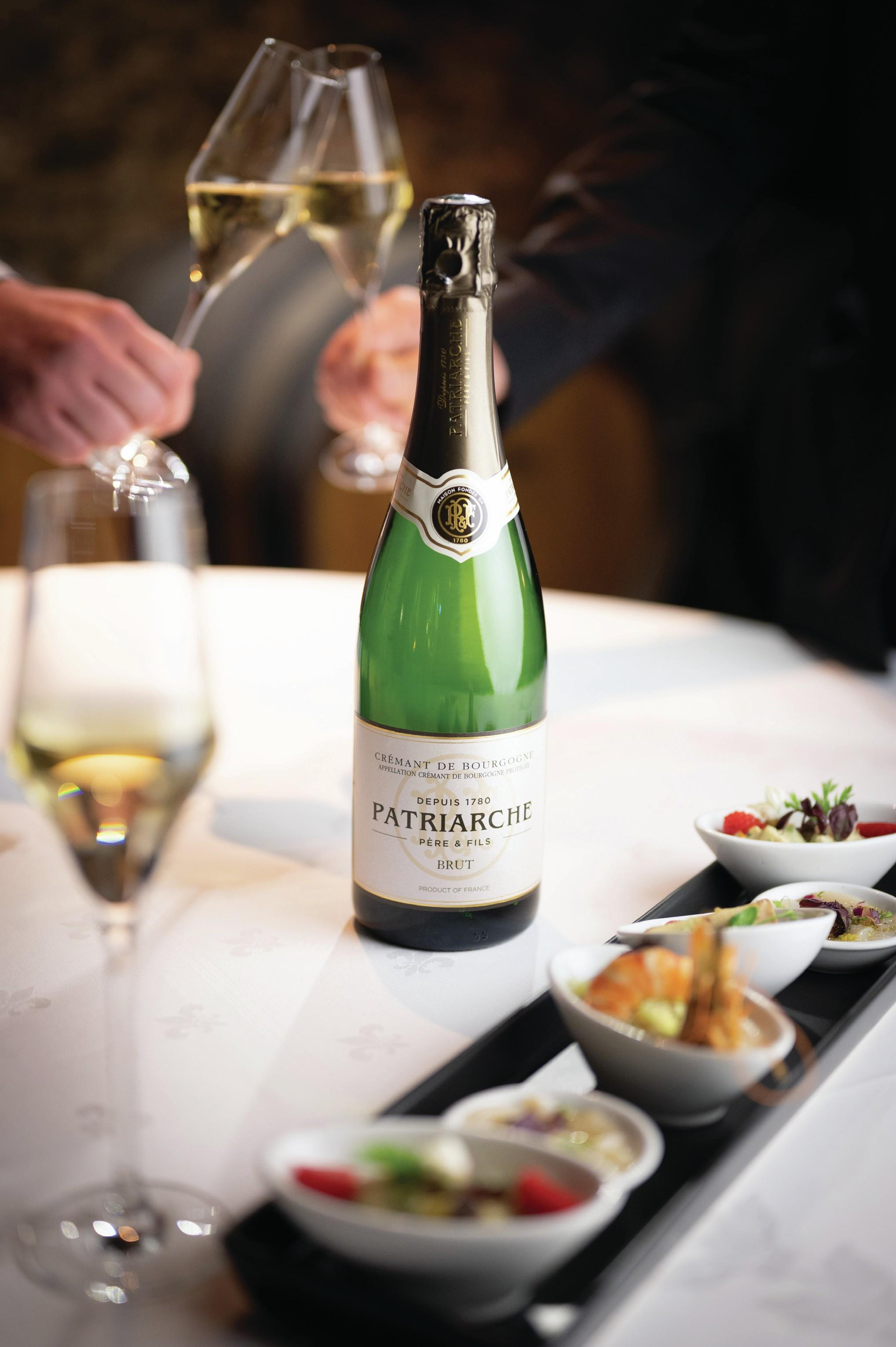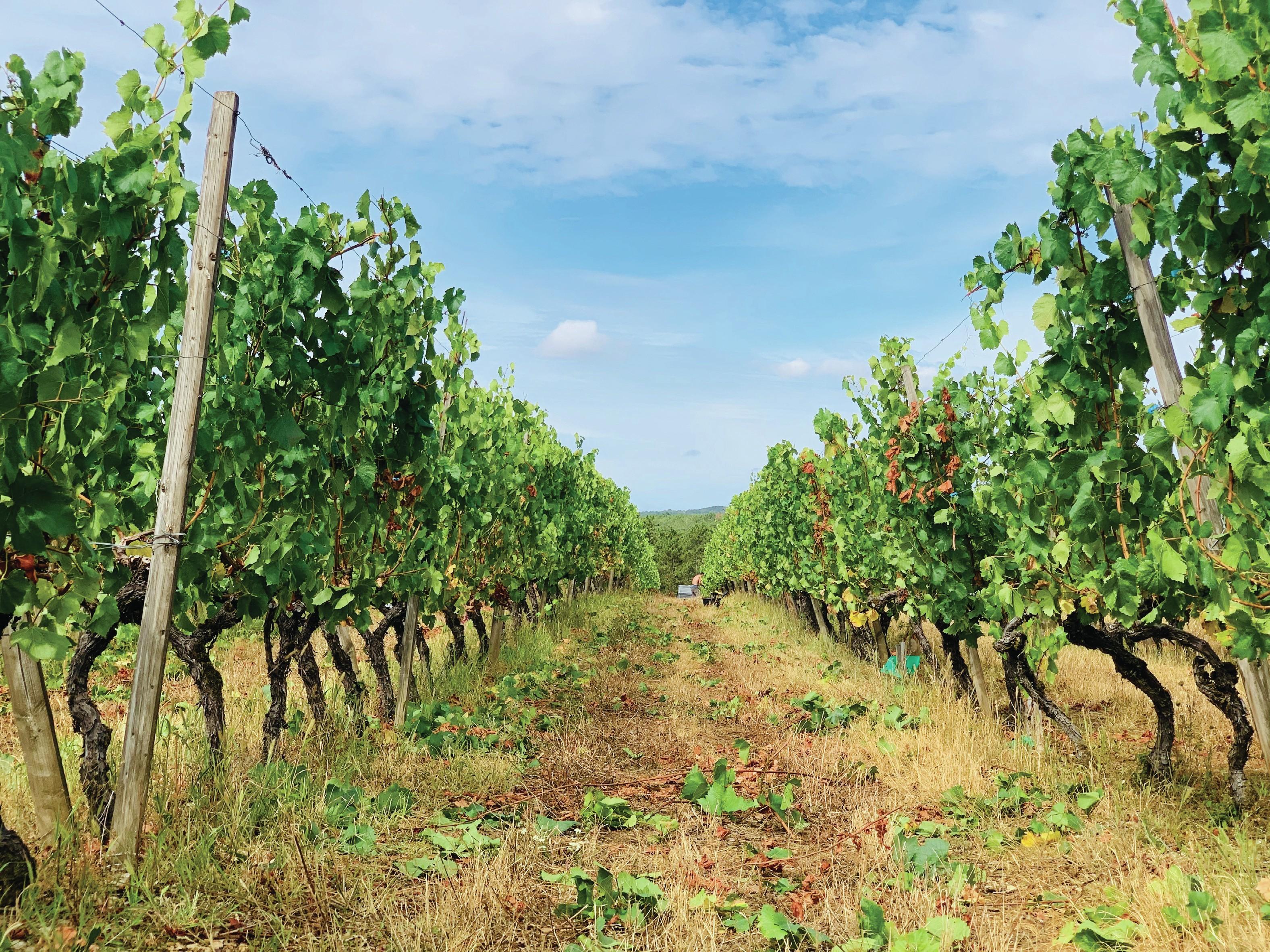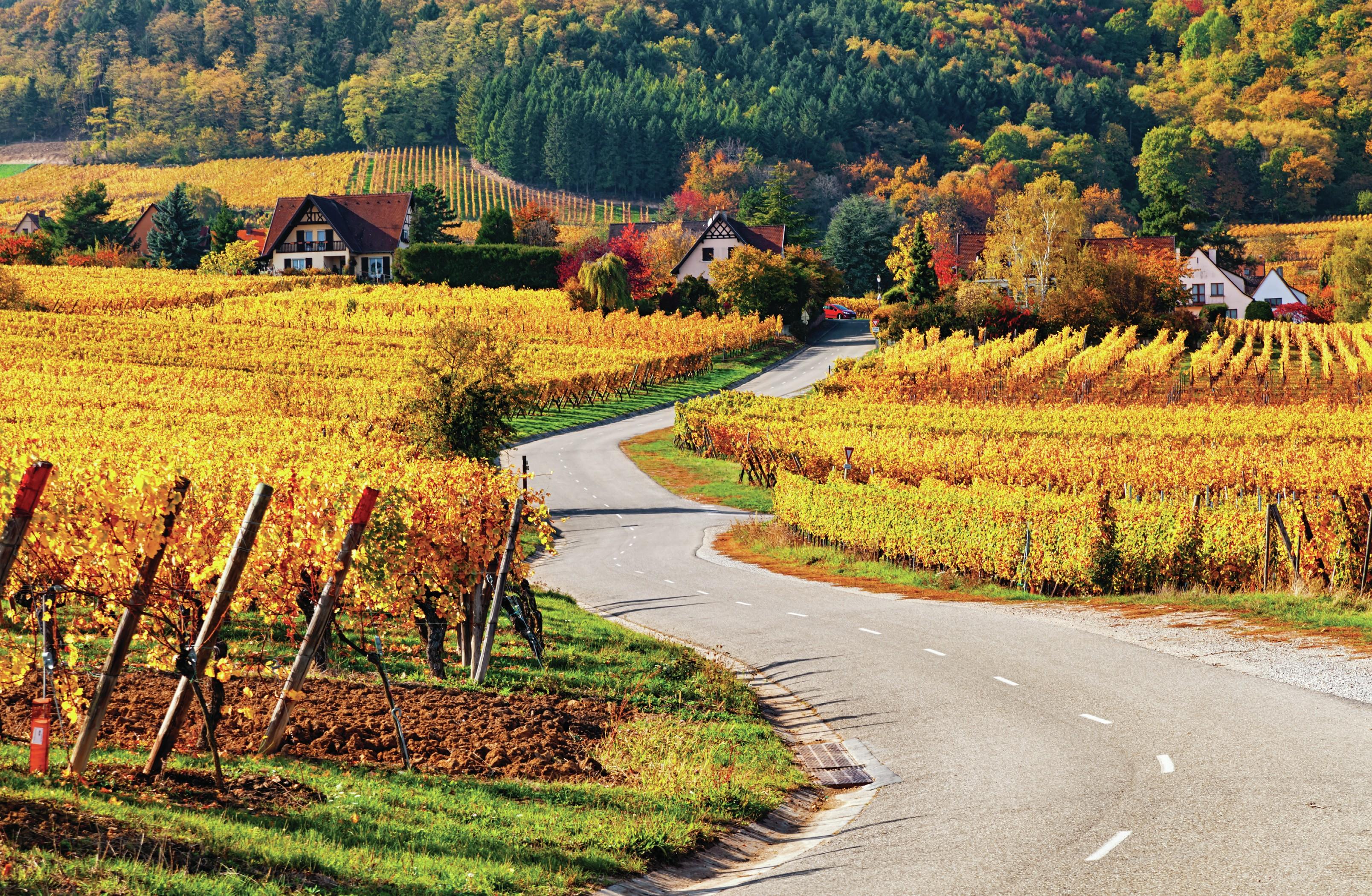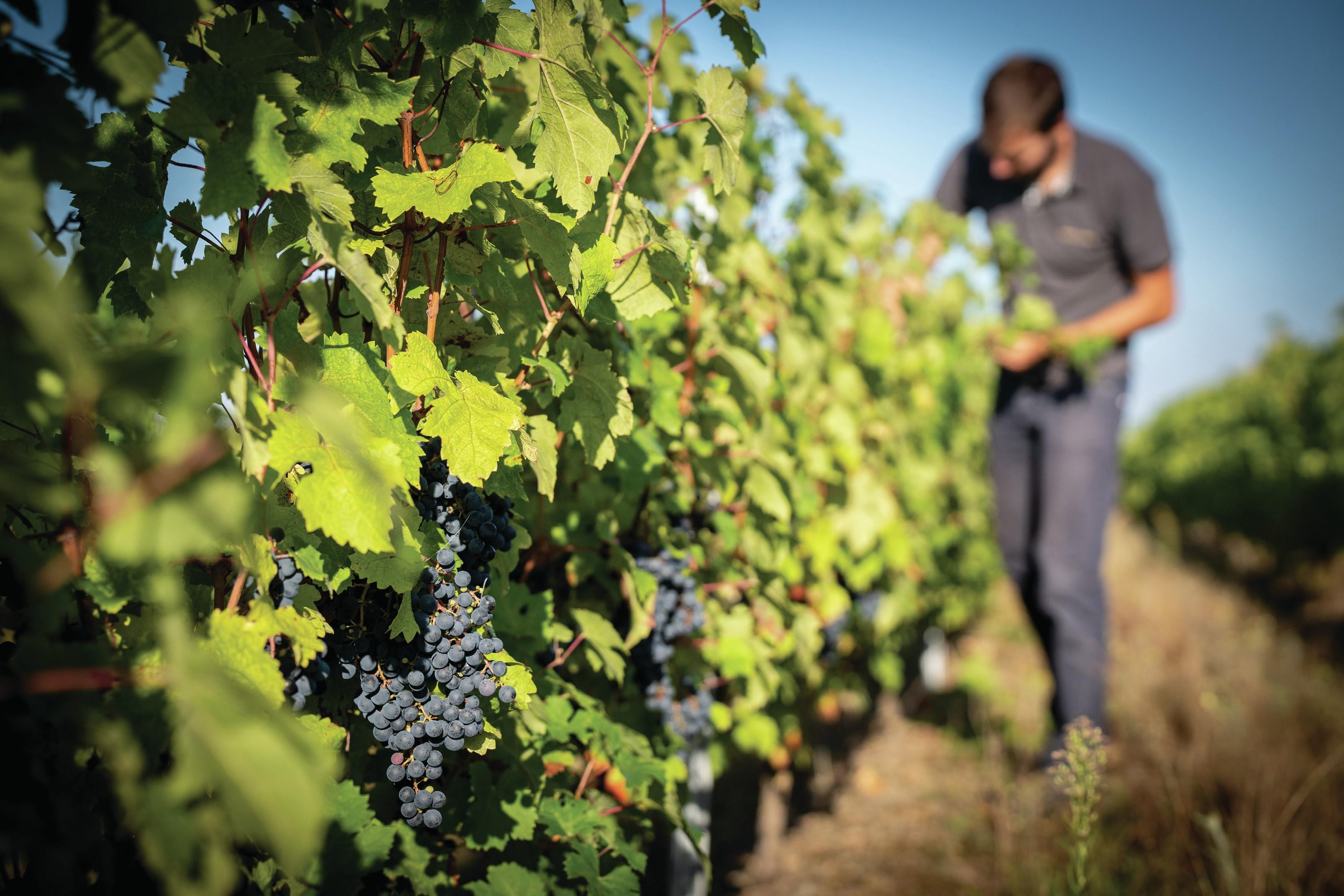Sometimes unfairly dismissed as a Champagne substitute, Crémant is stepping into the spotlight as sales surge, reports Amelie Maurice-Jones.

During a wine and chocolate pairing at Gratien & Meyer’s Saumur-based winery, a single square of artisan white chocolate is transformed by a glass of the producer’s Crémant de Loire Brut, the chocolate’s creaminess lifted by the wine’s bright grapefruit acidity.
Next comes a slab of raspberry chocolate, which turns sharp and moreish with a sip of buttery Crémant de Loire Brut Rosé. It’s not the only local gastronomic pairing experience for the sparkling wine. Guests dining at La Table du Château Gratien will find Crémant poured alongside dishes featuring pistachio, strawberries and octopus (mercifully, not all at once).
It’s all part of Gratien & Meyer’s bid to showcase its fizz in different settings as it ramps up production. “Since 2018, sales have more than doubled, with growing interest outside France, particularly in the UK, Germany, Austria and the Nordics,” says Katy Murarotto, general manager of Freixenet Gratien, the French arm of sparkling wine giant Henkell Freixenet. “Looking at 2025 year-to-date, we are also seeing strong double-digit growth.”
Bucking the Trend
It’s a story celebrated by Crémant producers across France. In 2024, French wine exports fell by value for the second consecutive year, according to the Fédération des Exportateurs de Vins & Spiritueux de France (FEVS), with Champagne shipments slumping by a sharp 9.2%, according to the Comité Champagne. However, Crémant bucked the trend, as consumers, reluctant to splurge on Champagne as they clutched their wallets tight, sought out an alternative fix.
Last year, Crémant sales reached 114.5 million bottles, a 5.9% increase on 2023, according to statistics from the Fédération Nationale des Producteurs et Élaborateurs de Crémant, with Gratien & Meyer’s parent company, Henkell Freixenet, seeing Crémant sales surge by 16%.
“Sales are going up every year,” confirms Morrisons wine sourcing manager Emma Jenkinson. The UK retailer now sells six times the amount of Crémant it sold when it launched its first expression, Cuvée Royale Brut Crémant de Limoux, six years ago. “Stylistically it’s a great step between the wonderful world of Prosecco, where everything is light, bubbly and delicious, to Champagne, where you get all the concentration of the toast and brioche notes,” Jenkinson adds. It’s a great opportunity for really good-value wine that is still accessible for a lot of people.”

At Waitrose, Crémant is also climbing up the sparkling world ladder. Last year, Crémant sales outpaced Cava. “This year, sales of Crémant at Waitrose were up 9%, with options such as the Cuvée Royale Brut Crémant de Limoux and Prince Alexandre Crémant de Loire both up 6%,” Waitrose sparkling and Champagne buyer Alexandra Mawson says.
“By analysing customer trends, we decided to include Crémant for the first time in our £10 fine wine deal last year, and sales were so good that we ran out of bottles.” Such was its success that the retailer plans to add a new Crémant to its range in March 2026.
Similarly, Marks & Spencer has seen a “massive surge” in Crémant sales over the past five years, and has recently added a new product – Crémant d’Alsace Blanc de Blancs – to its portfolio. Senior buyer Dror Nativ MW identifies its No. 12 Crémant de Bourgogne as its best seller, offering “outstanding complexity and depth of flavour” for just £12. Nativ believes consumers are learning the “brilliant value” of Crémant, while also growing to appreciate the different styles within the category, as each region has its own unique blend or style.
Regional Variations
Crémant is made in eight different appellations throughout France and can also be found in Luxembourg. Although regional regulations can vary, all Crémant wines undergo secondary bottle fermentation, as with Champagne, and must stick to specific requirements on grape harvesting, ageing and pressing. No two Crémants are the same, and each region has a unique selling point when it comes to meeting the global demand for sparkling wine.

For instance, Chenin Blanc is the “beating heart” of Crémant de Loire, with the Loire Valley’s local soils and ‘tuffeau’ chalk creating acidic and fresh wines, according to Langlois’ sales director Laurent Onillon, who hopes to eventually expand Crémant production by as much as 30% or 40%.
At the winery, marketing is a key tool to highlight quality (hand-picked grapes, light pressing, two years’ ageing minimum on lees) and to underline Langlois’ business philosophy: “For Champagne, you will anticipate your moment to celebrate something special. As far as Crémant is concerned, we want it to be much more spontaneous. That’s why our motto is: ‘Elevate the simple moment,’” Onillon says.

Then there’s the Alsace region, located in the foothills of the Vosges mountains of northeast France, and responsible for more than 50% of French Crémant production, where a sunny climate and mosaic of soils help a large range of grape varieties to ripen well.
At Cave De Turckheim in Alsace, it’s a similar tale: the winery has seen sales surge 15% over the past three years. “Most Crémants are in the middle-range price segment, but with top quality in the bottle. Crémant d’Alsace wines are mostly fresh, fruity, with a matured acidity and can be also drunk on their own as an aperitif, or just a glass in a pub,” says the winery’s sales director Emmanuelle Gallis, pointing to the multipurpose capacity of Crémant.
The producer is bottling more fizz every year to meet demand, as well as launching new expressions of the wine, the latest one being a Platinum cuvée to mark its 70th anniversary – a blend of different Chardonnays aged in stainless steel tanks, oak and acacia. “We need at least 12 months’ ageing before selling the bottles,” explains Gallis. “For most of the cuvées it’s 18 months, 24 months or even 48 months for some.”
Luc Dirler, of Dirler-Cadé, also testifies to Crémant d’Alsace’s popularity: “The wines have found their market, are of good quality for the price and, since the region has a lot of tourism, lots of people bring bottles back home. We have a huge diversity of terroirs, which induces a great diversity in the wines.”
He continues: “Our estate used to be amongst the first producers in Alsace back in 1890 until 1939. Jean Dirler, my great-great-grandfather, wrote back then that his ‘sparkling aged as well as another good Champagne’. We started making Crémant again in 2005 with a cuvée of white Crémant mainly made with Pinot Gris. Then we launched a new rosé cuvée in 2008, followed by a 100% Riesling cuvée in 2014.”
Burgundy too, a mecca for its Chardonnay- and Pinot Noir-based wines, produces Crémant de Bourgogne, mainly in the northern area of Auxerre and further south in Rully. “We have more fresh grapes, and we are closer to Champagne,” explains Parigot & Richard owner Grégory Georger. “It’s more appropriate for elegant sparkling wines.”

Much more than ‘affordable Champagne’
To an extent, it seems that no Crémant can escape being compared with Champagne. Publications from The Telegraph to The Times have tattooed Crémant with the ‘affordable Champagne’ epithet. But does being known as the cheaper version of your iconic French sibling boost you up, or leave scars? It proves a heated debate. Some, like Langlois’ Onillon, outrightly reject the label. “We have our own grapes, exclusive terroir and unique climate, so we are different,” he makes clear. “Being described as ‘affordable’ is a negative perception because it means you are cheaper. It is not a question of price, but a question of taste.”
And for Etienne-Arnaud Dopff, owner of Dopff Au Moulin in Alsace, the comparison is futile. “We are in two completely different universes with the same method, but most of all we are complementary,” he says. “It depends on your taste and the moment.”
Murarotto at Freixenet Gratien is also in the camp that “Crémant is not Champagne”. While there are indeed similarities between the two, the aim “is not to fight against Champagne”.
She explains that Champagne is dedicated to exclusive celebrations, while Crémant perfectly suits more informal, joyful occasions. But other producers welcome the comparisons. “I love Champagne and I admire the wines,” professes Liv Vincendeau of Domaine Vincendeau, which has oriented its cellar process to mimic Champagne production to make its products closer to the style, after switching to exclusively Crémant de Loire production in 2022. “Champagne will always be on top, but we do our best to make comparable sparklings.”
Then there’s Dirler at Dirler-Cadé, who finds comments likening Crémant d’Alsace to Champagne to be “valorising”. He says: “The comparisons were always numerous, but the quality has increased by a lot. Nowadays these comparisons are rather beneficial.”

Philippe Marion, managing director of Patriarche-Kriter and Barton & Guestier, agrees that comparisons help the category, reasoning that “if you taste blind, you don’t feel the difference”, with good-quality Crémant aligning with medium-quality Champagne.
If that’s the case, could Crémant ever compete with Champagne? “It could,”
Marion picks his words carefully, “especially at the restaurant level, where the sommelier can advise what to drink at €50 a bottle, instead of a €150 bottle of Champagne.” When it comes to retail, it’s trickier, he adds: “Champagne remains a magic name. If you have something to celebrate, you think: ‘It’s time for a bottle of Champagne.’”
Besides, Marion believes that the growth of Crémant relies on Champagne not dramatically lowering its prices, because “if the prices become closer together, people would switch back to buying Champagne”. To truly shine, he thinks that Crémant needs to work on creating a name for itself, by investing in branding and marketing, and by prioritising quality.
“That’s what we’re trying to do,” he insists. This investment looks like fresh packaging (“I want to write B&G or Patriarche big on the bottle”), food and wine pairings, and short videos produced to educate drinkers on the winemaking method.
Gratien & Meyer is similarly prioritising packaging as it expands its production. “All Crémant packaging looks alike, and when consumers are in front of the shelf and need to make a choice, it is always difficult for them to find the right product,” says Murarotto. “So standing out on the shelf is mandatory to be visible and distinctive, and be sure that consumers will recognise the bottle the next time they would like to buy it. In addition to that, the incomparable quality of the product is also key to success.” Luc Dirler agrees: “The biggest challenge will be to show and prove that Crémant wines are of very good quality, that numerous Crémants are better than Champagnes and to make it acknowledged by the consumer,” he explains. “There are more and more new regions that produce sparkling wines now, even some regions that weren’t producing any wine at all not so long ago. The important thing is not to lose our place in the market.”

Rather than expanding production, Dopff is knuckling down on quality. “We are in a segment where we gain notoriety and value, while not necessarily developing the volume, to maintain constantly high quality, which our clients know the brand for,” he says. “Therefore, we need stock and time on lees, and we work with Mother Nature and organic conservation methods, so the crops won’t be bigger.” But, he emphasises, Dopff is remaining “reactive and innovative” through constantly trying out new styles of cuvée. “We need to be clever to manage this growth in the future and stay close to our clients,” he adds.
But as quality climbs, Vincendeau hopes to see prices climb with it, boosting winemakers’ margins. “Apart from the cost of the land – which is very much higher in Champagne – we have the same production costs,” he says. “So an organic-certified Crémant de Loire from a small winery like mine can simply not be sold below €25. We hold to our premium positioning, but this slows down sales – the market in general is not ready for these prices.”
The solution is shifting the “image” of the category, and continuing to shout about its quality. She adds that this is “collective work”.
But, for Georger, there’s room for everyone – be it the Crémant sold in Michelin-starred restaurants, or those wines sold for pennies in supermarkets. In other words, the boujees and the budget. “The key to success is not to be reduced to one category of clients,” he attests. “Nobody is ashamed to drink Crémant – even people who are wealthy and can buy very expensive wine are interested to taste something different. And we are one of the wines people are wanting to taste right now.”
Crémant’s rise shows no signs of slowing. As the Champagne industry weathers shrinking exports and shifting priorities, France’s ‘other’ sparkling has stepped into the spotlight. From the Chenin-led cuvées of the Loire to the crisp blends of Alsace, producers are reshaping perceptions through careful winemaking, smarter packaging and authentic storytelling. But, as the market becomes more crowded, how Crémant chooses to tell its story will come to define its next chapter.


Dining and Cooking